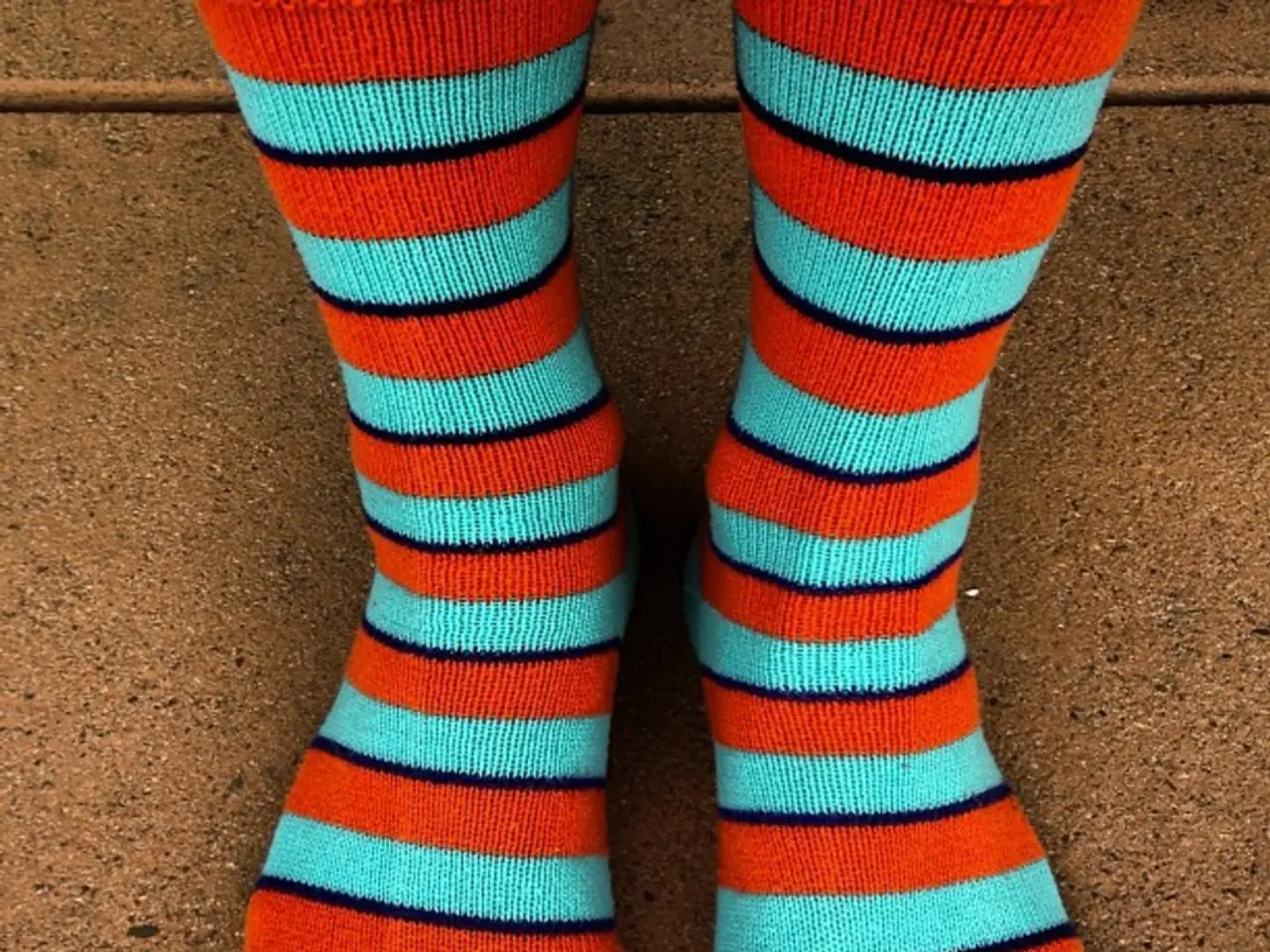Natural cures for persistent athlete's foot infection.
Athlete's foot, a common fungal infection affecting the feet, can be a nuisance for many people. While there are several over-the-counter treatments available, some individuals prefer to turn to home remedies for relief. Here's a look at some popular home remedies for athlete's foot, their effectiveness, potential side effects, and when to consult a doctor.
### Tea Tree Oil
Tea tree oil, with its natural antifungal and anti-inflammatory properties, has shown promising results in treating athlete's foot. Studies have demonstrated that solutions of 25% to 50% tea tree oil are more effective than a placebo, clearing the infection in about 64% of cases, compared to 31% with inactive treatments [4]. However, it's crucial to dilute the oil with a carrier oil, such as coconut or olive oil, before application to avoid skin irritation or allergic reactions.
### Garlic
Garlic, known for its potent antifungal compounds, may help reduce fungal infections when applied topically or consumed regularly. While research is more anecdotal than rigorous clinical evidence, crushing three to four garlic cloves and stirring them into a basin of warm water can be a simple remedy. Soak the feet for 30 minutes, twice a day for up to a week, taking care to avoid prolonged direct contact as garlic can cause skin burning or irritation.
### Hydrogen Peroxide with Iodine
Hydrogen peroxide, with its ability to destroy fungi by oxidizing cells, is a popular home remedy for athlete's foot. Iodine's antifungal properties can complement this, though combined usage should be cautious. Soak feet in equal parts of water and hydrogen peroxide, and apply iodine carefully but sparingly. Be mindful of potential side effects such as skin irritation, dryness, or burns if the solutions are too concentrated or used excessively.
### Hair Dryer and Talcum Powder
Keeping the feet dry is crucial in preventing the spread of athlete's foot. Using a hair dryer on a cool or low heat setting dries feet thoroughly, while talcum powder absorbs moisture, helping prevent fungal growth. Dry feet completely after bathing and apply talcum powder especially between toes. Overuse of powders may cause irritation or allergic reactions in some.
### Baking Soda
Baking soda, with its ability to absorb moisture, can help keep feet dry and reduce fungal spread. Apply baking soda powder on feet and inside shoes daily to reduce moisture. Rare but potential side effects include dryness or mild irritation.
---
### When to Consult a Doctor
While home remedies can help manage mild symptoms of athlete's foot, persistent, severe, or complicated cases warrant professional medical treatment to ensure effective and safe resolution. Consult a doctor or podiatrist if symptoms persist for more than two weeks despite home and over-the-counter treatments, if there are signs of a spreading or severe infection, or if the infection involves thickened or discoloured toenails, secondary bacterial infection, or if you have diabetes, a weakened immune system, or circulatory problems.
In summary, home remedies like tea tree oil, garlic, hydrogen peroxide soaks, drying with a hair dryer plus talcum powder, and baking soda can aid in managing mild athlete's foot, primarily by reducing moisture and fungal presence. However, none are guaranteed cures. Always consult a healthcare professional for medical advice, especially in cases of persistent or severe symptoms.
- The natural antifungal and anti-inflammatory properties in tea tree oil make it effective in treating athlete's foot, with solutions of 25% to 50% showing more success than placebos.
- Garlic, known for its powerful antifungal properties, might help reduce fungal infections when applied topically or consumed regularly.
- Hydrogen peroxide, with its ability to destroy fungi by oxidizing cells, is a popular home remedy for athlete's foot, but combined usage with iodine should be done cautiously.
- Using a hair dryer on a cool or low heat setting dries feet thoroughly, while talcum powder absorbs moisture, helping prevent fungal growth.
- Baking soda, with its ability to absorb moisture, can help keep feet dry and reduce fungal spread, but overuse may cause irritation or dryness.
- Cases of athlete's foot that are persistent, severe, or complicated require professional medical treatment to ensure effective and safe resolution.
- athletes with diabetes, a weakened immune system, or circulatory problems should consult a doctor or podiatrist even for mild symptoms as complications can arise.
- When it comes to home remedies, it's essential to remember that while they can help manage mild symptoms, they are not guaranteed cures for athlete's foot.
- In health-and-wellness, fitness-and-exercise, and skin-care, it's crucial to consult healthcare professionals for medical advice, especially when dealing with skin-related conditions like athlete's foot.
- A household cleaner like bleach, while effective in cleaning surfaces, should not be used for direct contact with the skin to avoid causing burns and irritation.
- It's important to wear suitable footwear to maintain foot hygiene and reduce risks of fungal infections, such as athlete's foot.
- Ulcerative colitis, Crohn's disease, COPD, HIV, and certain types of cancer, while completely different conditions, often require specific treatments and healthcare management outside of home remedies for athlete's foot.




